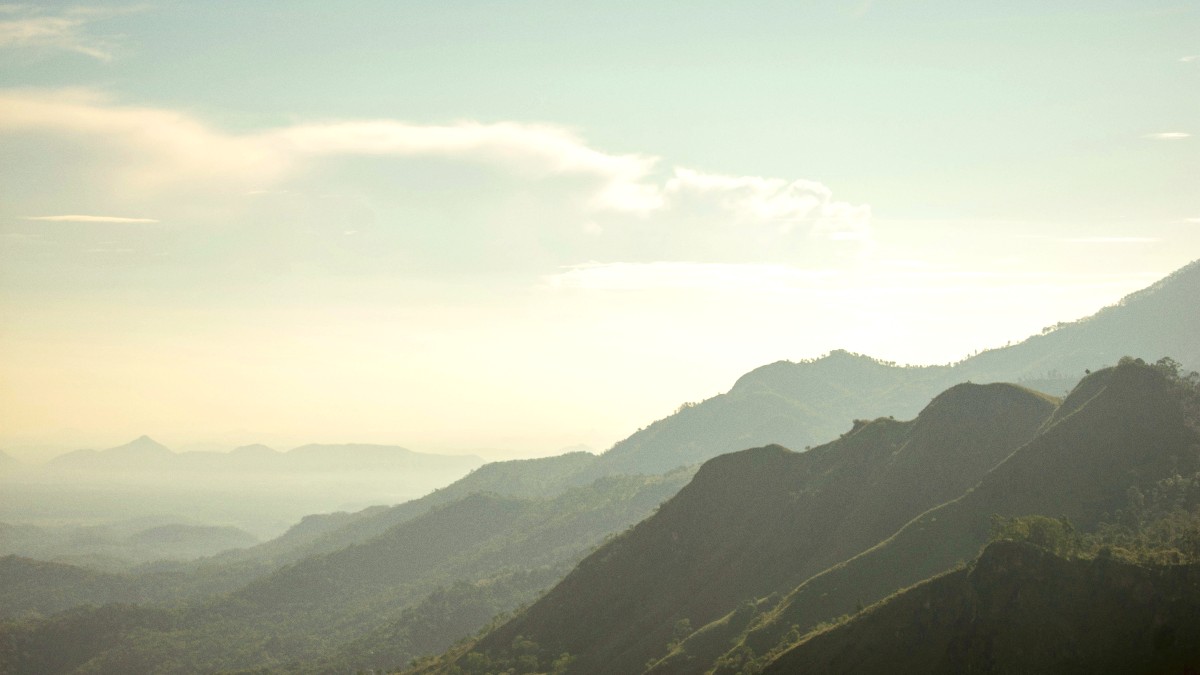
The South, Sri Lanka
Whale and dolphin watching tours depart from Mirissa, offering chances to see blue whales, the world's largest animal, during the peak season from November to April. For those seeking adventure on the waves, surfing is a popular activity, especially in nearby Weligama Bay, offering ideal conditions for beginners.
The town provides various dining options, from casual beachfront shacks serving fresh seafood barbecues to guesthouses with authentic Sri Lankan rice and curry. Accommodation ranges from budget-friendly hostels to comfortable boutique hotels and resorts.
Transport within Mirissa is simple with tuk-tuks. Local buses connect it to neighboring towns like Weligama, Matara, and the historic Galle Fort.
Cultural experiences include cooking classes for local dishes. Visitors also enjoy exploring Coconut Tree Hill for scenic views and iconic photos. The town's atmosphere generally calm, transforming into a lively scene in the evenings as beach restaurants light up the shore.
Tropical climate dictates conditions.
Less rainfall, more sunshine, calmer seas. Peak tourist season.
More frequent and heavier rainfall (Yala monsoon). Rougher seas.
Vary by season.
Expect more visitors, popular spots see many people.
Very few tourists, peaceful experience.
Fluctuates seasonally.
Potentially lower accommodation and tour prices.
Higher prices for accommodation, tours, and services.
Mirissa: a destination for beach lovers, wildlife enthusiasts, and those seeking a laid-back tropical getaway.
You can spend your days relaxing on the beach, or join an early morning whale watching trip.
Warm temperatures year-round (28-32°C).
High humidity throughout the year.
Range from hostels to luxury resorts.
Beach shacks to guesthouses.
Tuk-tuks, local buses.
Proper documentation for a smooth arrival and departure.
Most nationalities need an Electronic Travel Authorization (ETA) for short visits to Sri Lanka. The ETA typically covers tourism or business purposes.
Prepare these documents for smooth entry.
Currency information, typical costs, and ways to save money.
Mirissa presents a destination for beach lovers, wildlife enthusiasts, and those seeking a laid-back tropical getaway.
This table details an estimated daily cost per person, offering a guide for various travel budgets. Figures are approximate and vary based on season and individual choices.
Hostel Dorm Bed: LKR 2,000 - 4,000 (US$7-14)
A traveler aiming for minimal expenses, staying in hostels and eating locally.
Total Daily Cost: LKR 6,000-12,000 (US$20-40)
Limited dining options beyond local.
A traveler seeking comfort with a mix of local and tourist-oriented experiences.
Total Daily Cost: LKR 15,000-35,000 (US$50-120)
Occasional higher costs for popular tours.
A traveler seeking premium accommodations, fine dining, and private transport.
Total Daily Cost: LKR 40,000+ (US$130+)
High-end experiences entail higher spending.
| Category | Item | Price Range (LKR) |
|---|---|---|
| Accommodation | Hostel Dorm Bed | 2,000 - 4,000 |
| Meals | Local Rice & Curry | 500 - 1,500 |
| Activities | Whale Watching Tour | 8,000 - 15,000 |
Consult a travel health professional 4-6 weeks before your trip to discuss vaccinations and other health precautions.
Yellow Fever vaccination certificate only if arriving from a Yellow Fever risk country. Check current regulations.
Hepatitis A, Typhoid, Tetanus, Diphtheria, Pertussis (Tdap), Measles, Mumps, Rubella (MMR).
Rabies and Japanese Encephalitis might be suggested, depending on your itinerary, activities, and duration.
Traveler's Diarrhea:
A common issue. Drink only sealed Bottled water. Avoid ice unless from purified water. Eat hot, freshly cooked food. Wash hands frequently with soap or use Hand sanitizer.
Carry Anti-diarrhea medication (e.g., Imodium A-D Caplets) and oral rehydration salts.
Dengue fever is present year-round, especially after rain.
Small local clinics and pharmacies handle minor ailments and basic medications.
For serious conditions, travel to Matara General Hospital or Karapitiya Teaching Hospital in Galle (45-60 min drive).
Generally reliable in major towns, slower in rural areas.
Mirissa is generally safe for tourists. However, awareness helps prevent issues.
Be aware of potential natural hazards.
Sri Lanka is in a tsunami-prone region. Warning systems exist. Heed local advisories and evacuation routes near the coast.
Seasonal heavy rains cause localized flooding, disrupting travel, especially in low-lying areas. Stay updated on weather forecasts.
During monsoon, seas can be rough with strong currents, making swimming unsafe. Observe warning flags and advice from lifeguards.